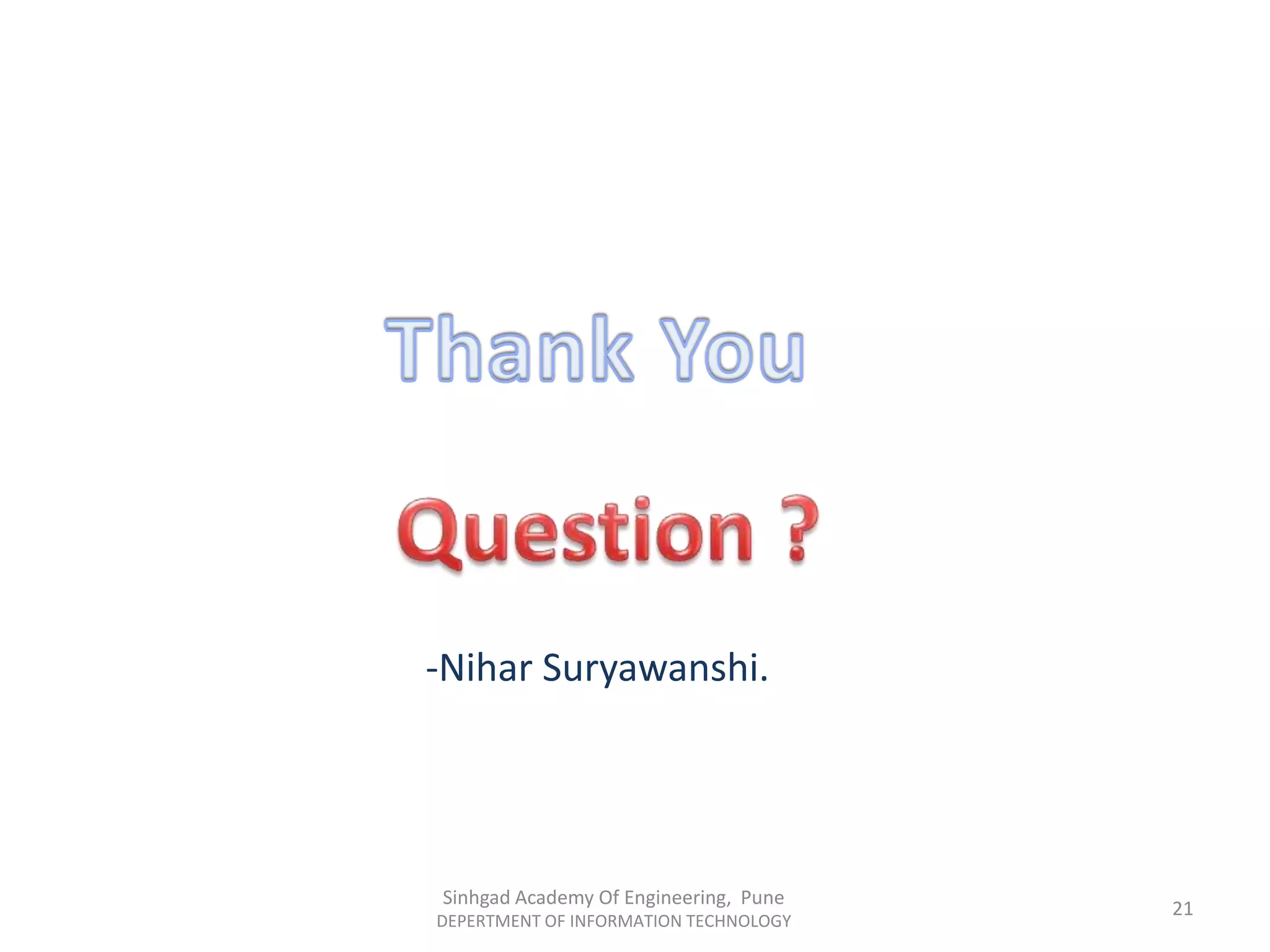The document provides an overview of machine learning (ML), covering its definition, requirements, and components, distinguishing between supervised and unsupervised learning. It explains classification and regression, outlines various ML algorithms such as Naïve Bayes and Support Vector Machines, and discusses the efficiency of these techniques compared to traditional methods. The document also highlights the application of ML in sentiment analysis and includes references for further reading.
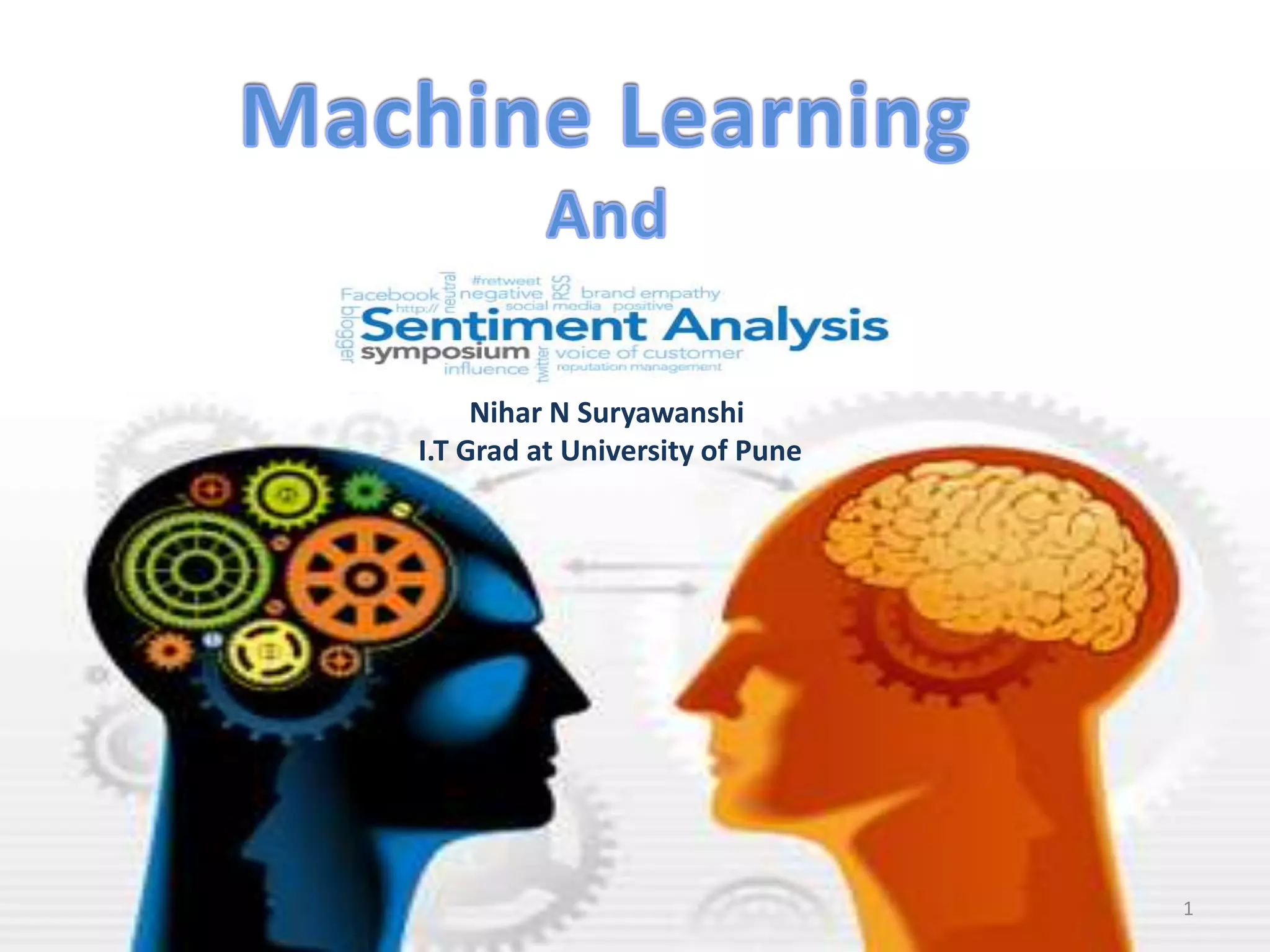
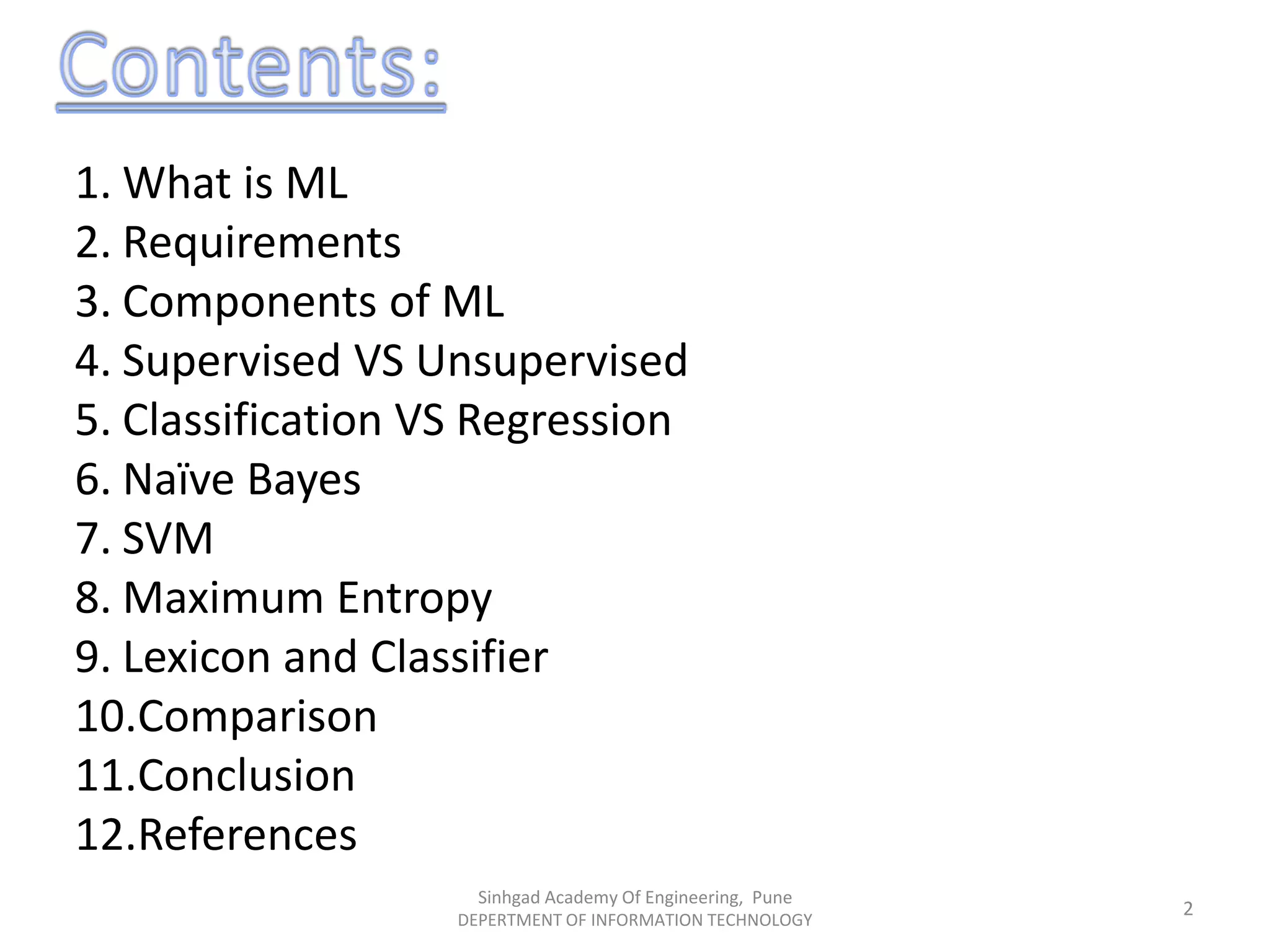
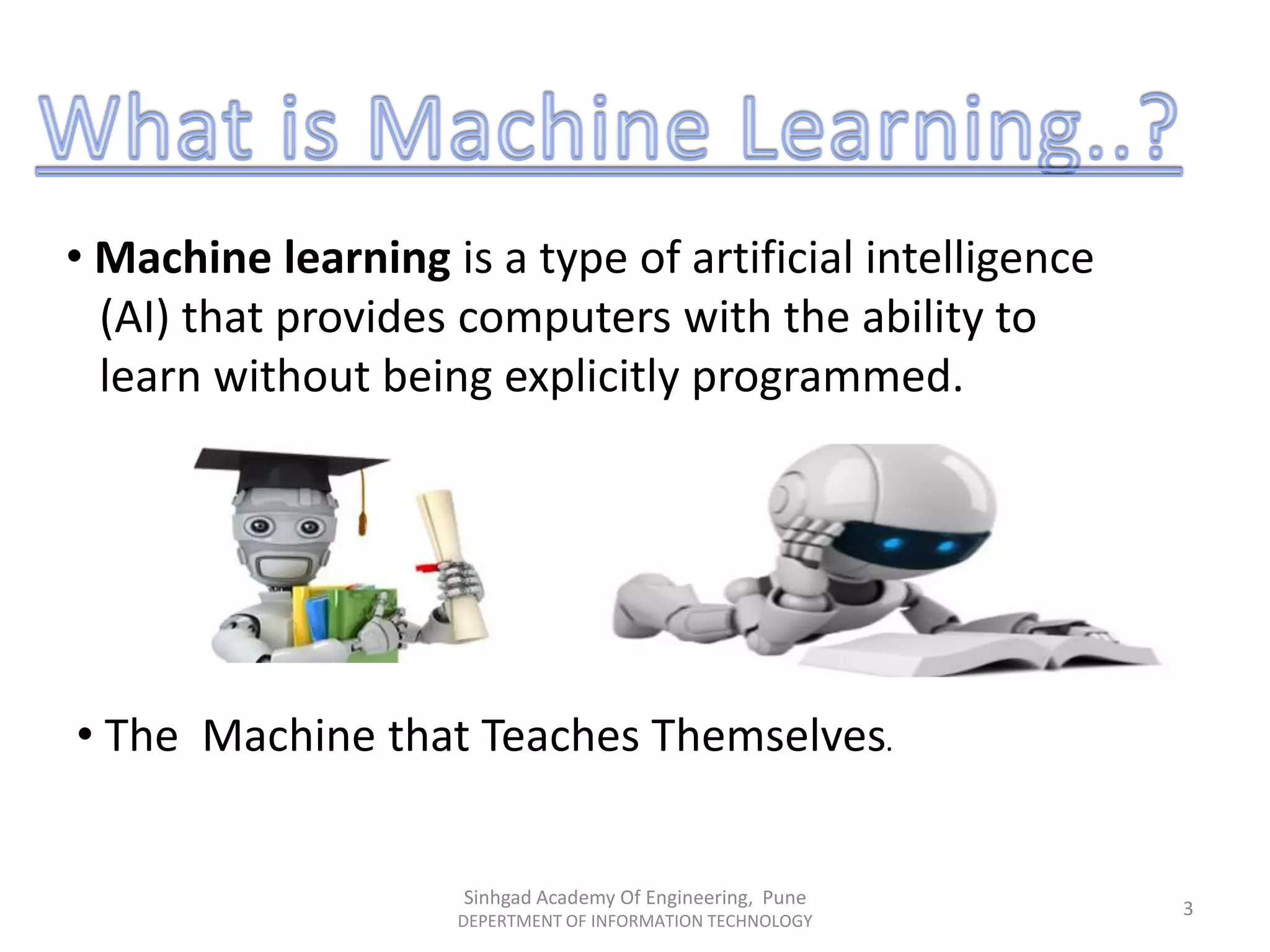
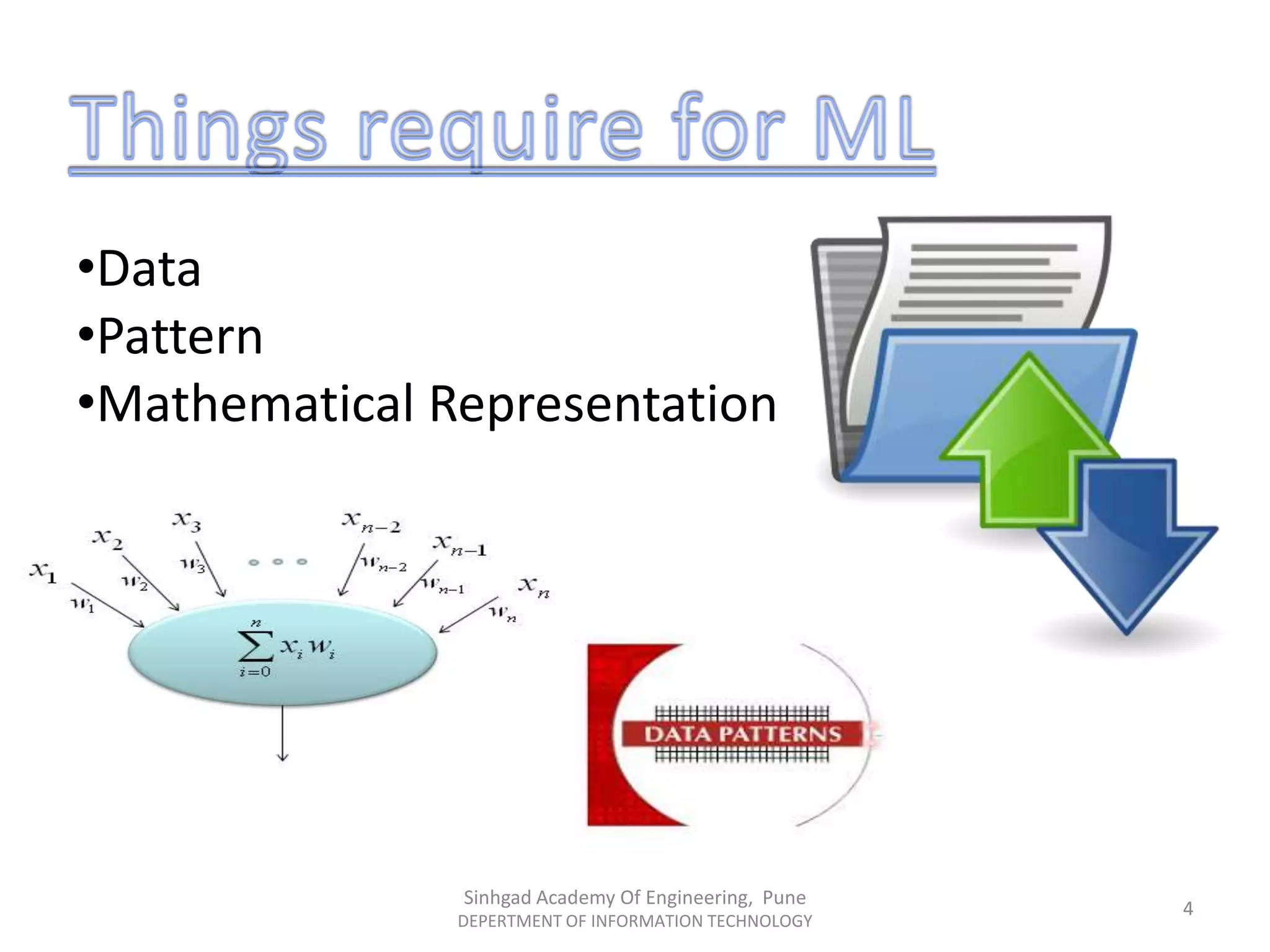
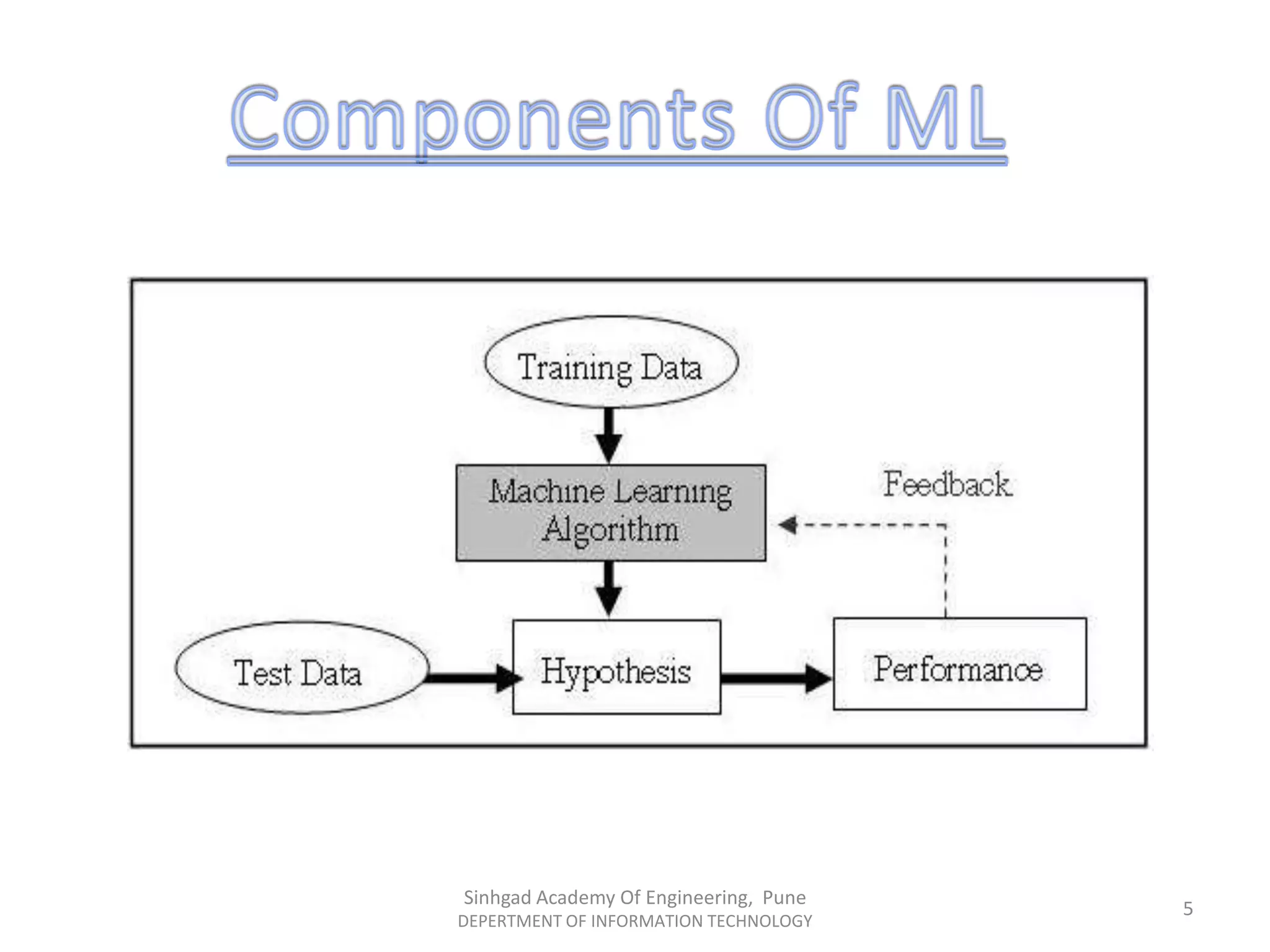
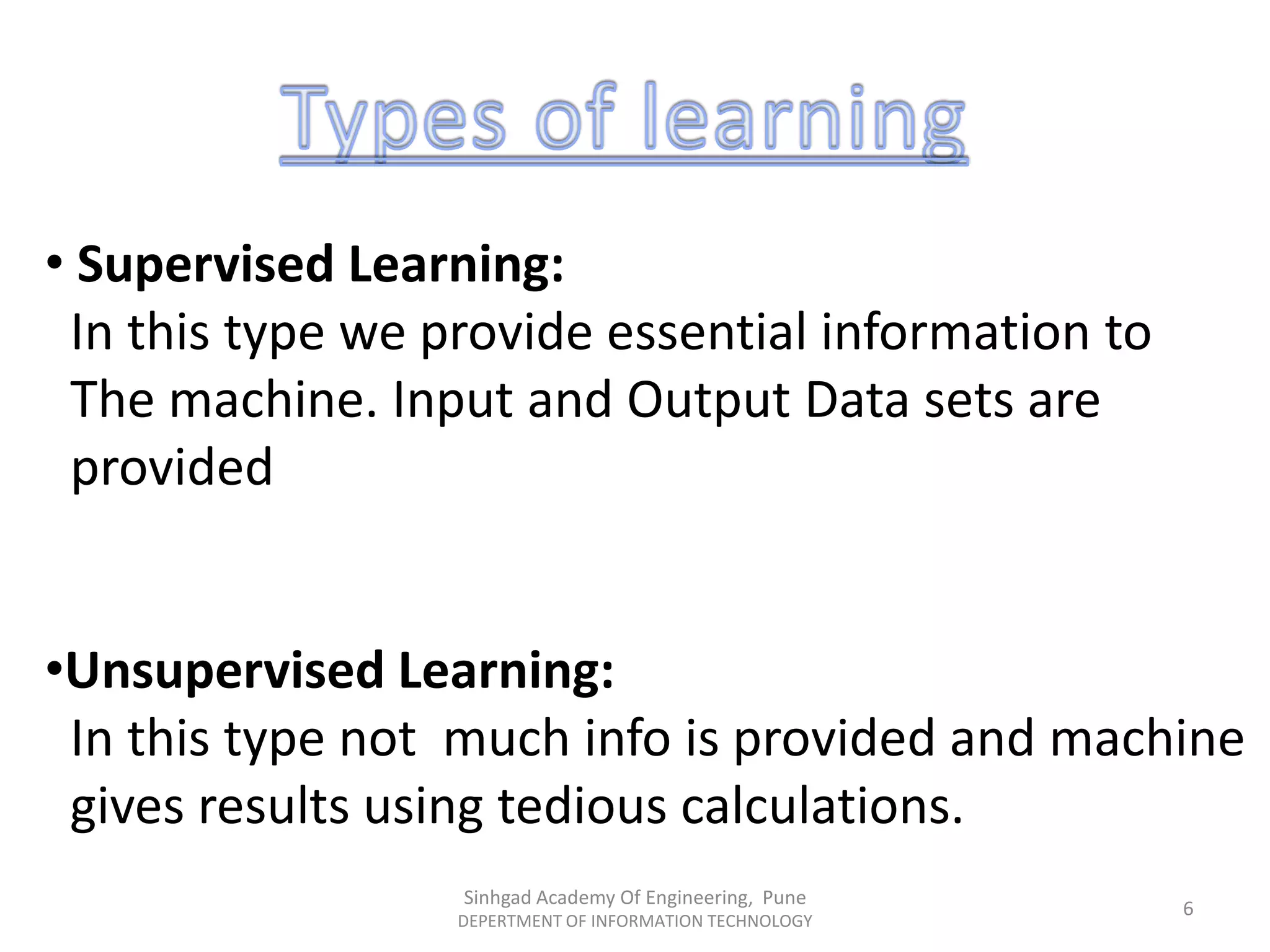
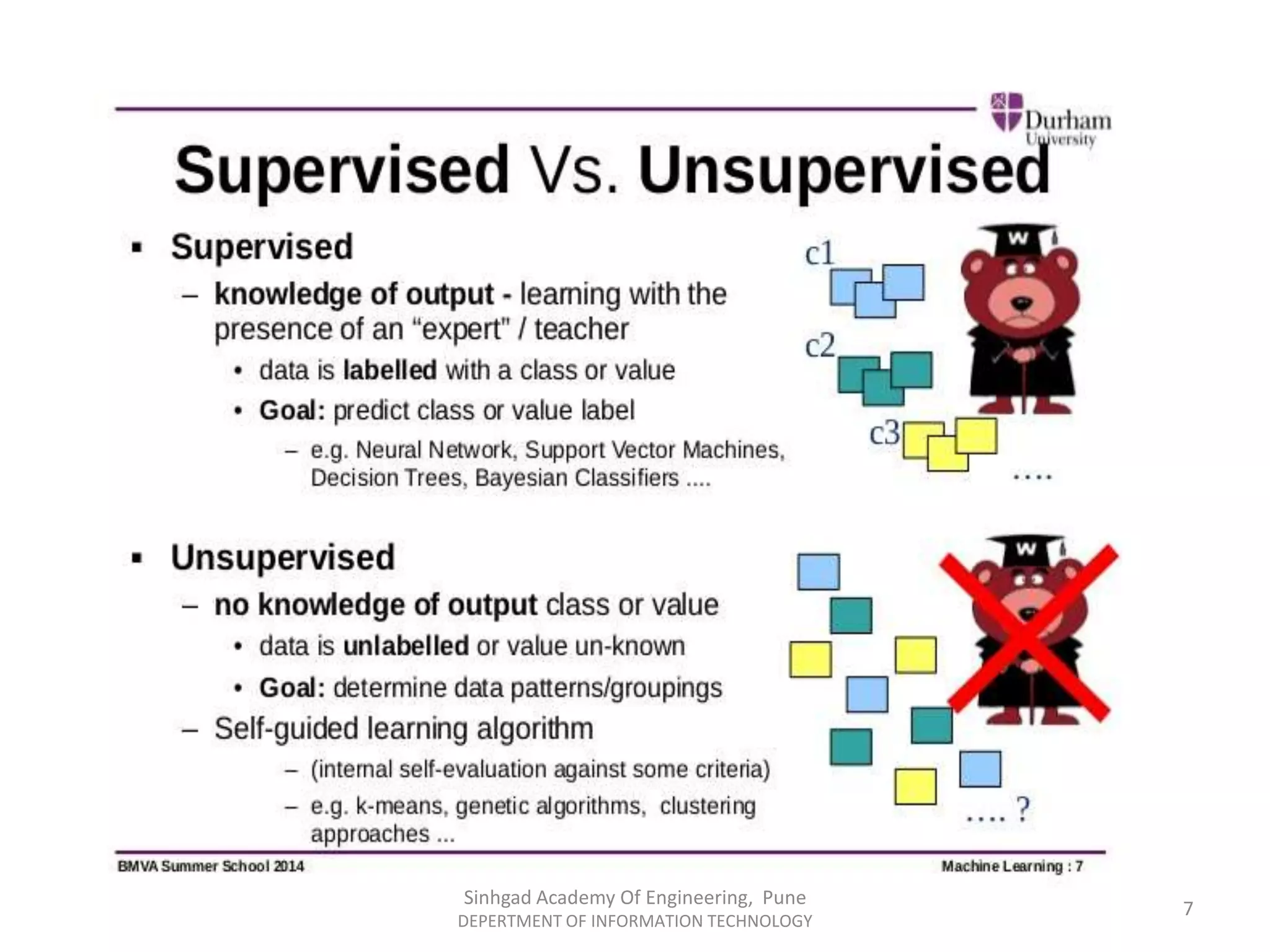
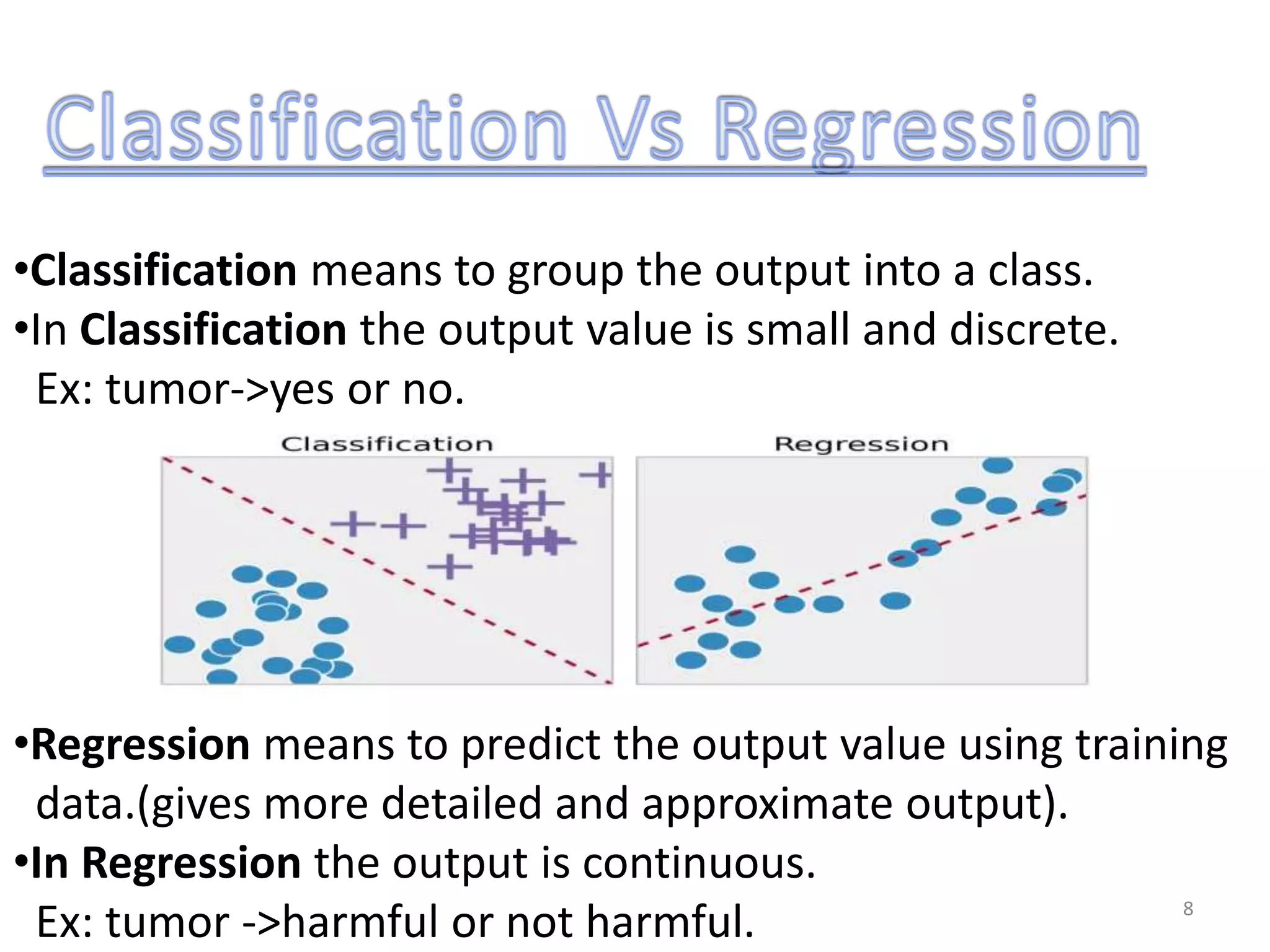
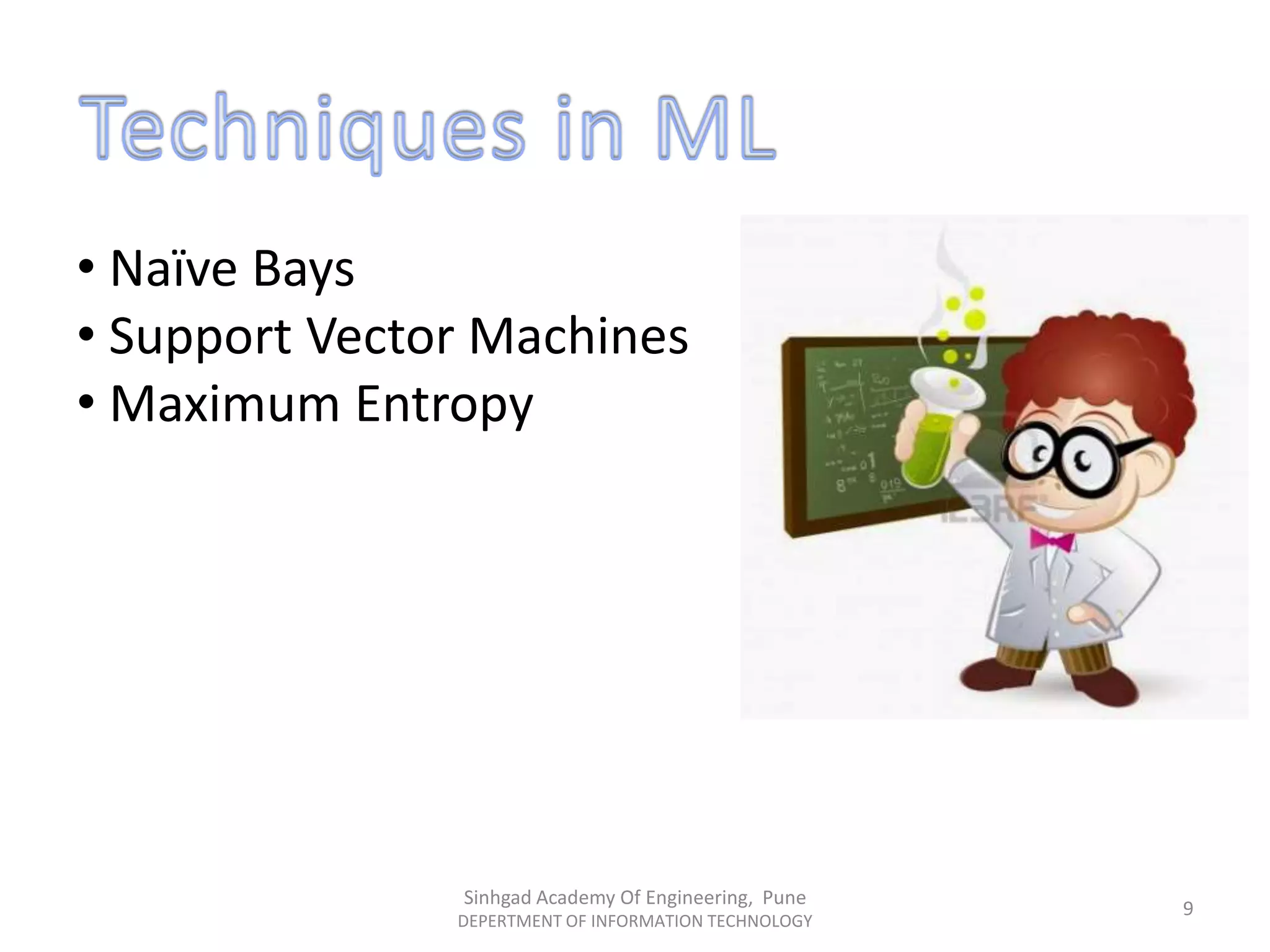
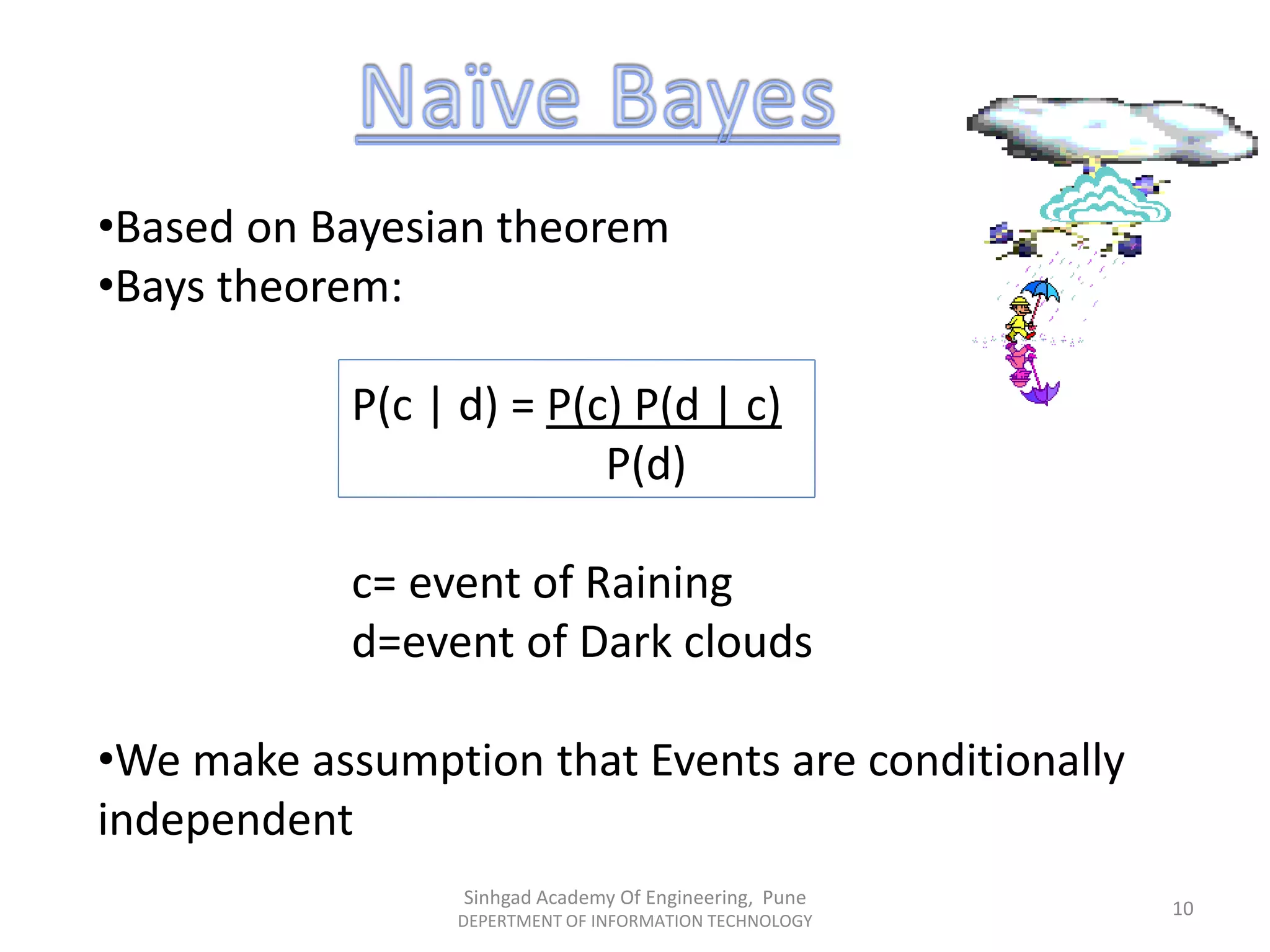
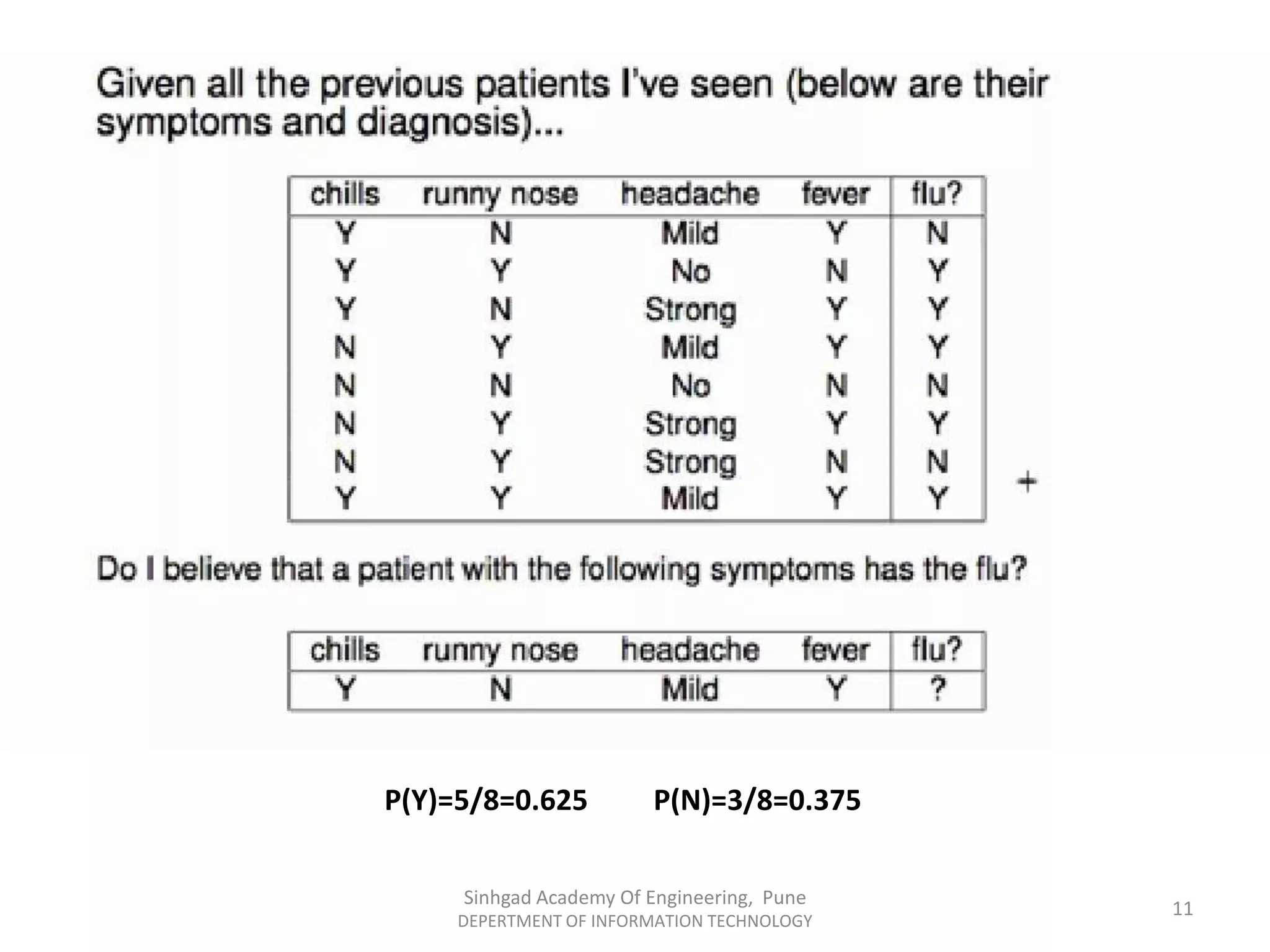
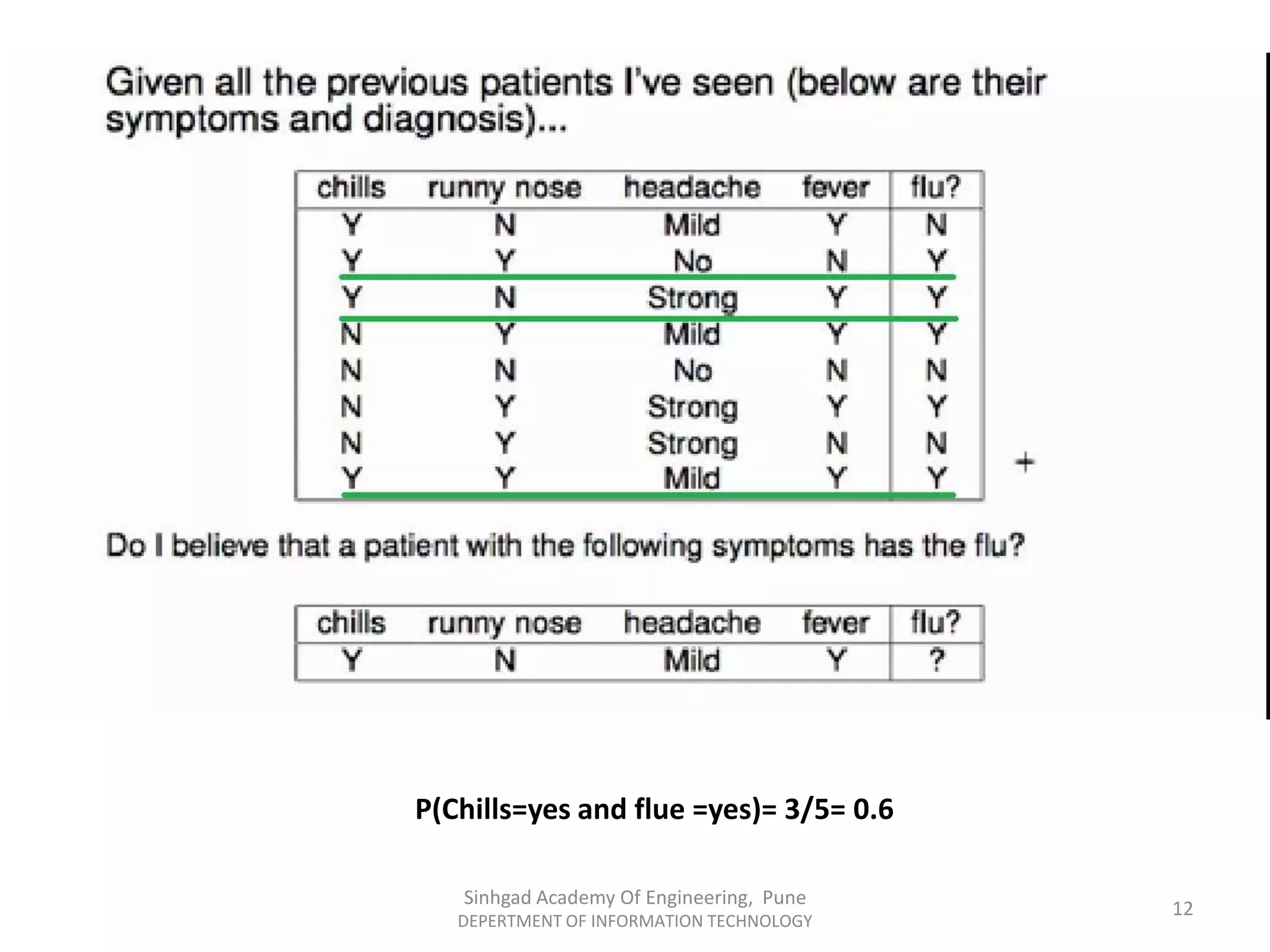
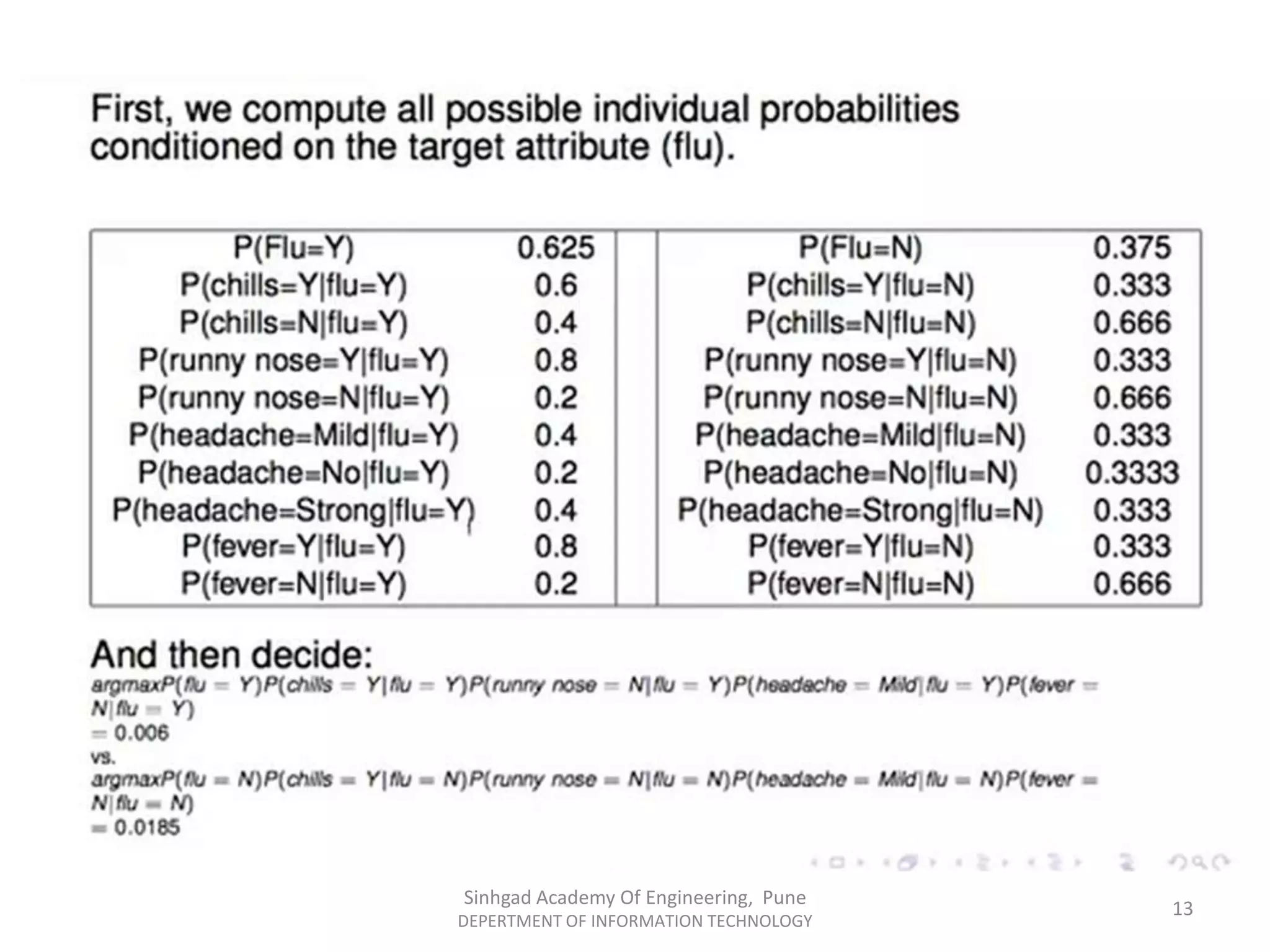
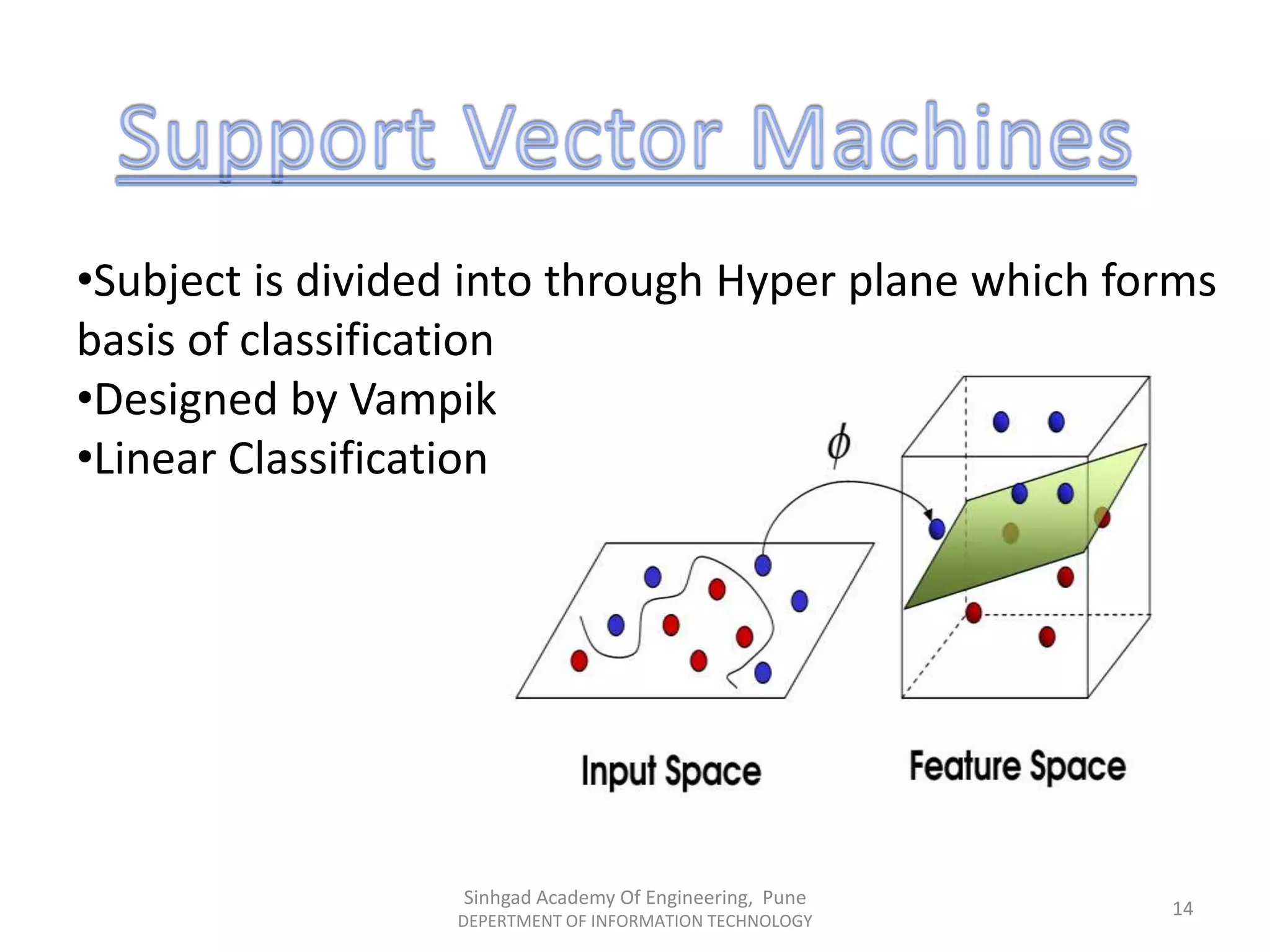
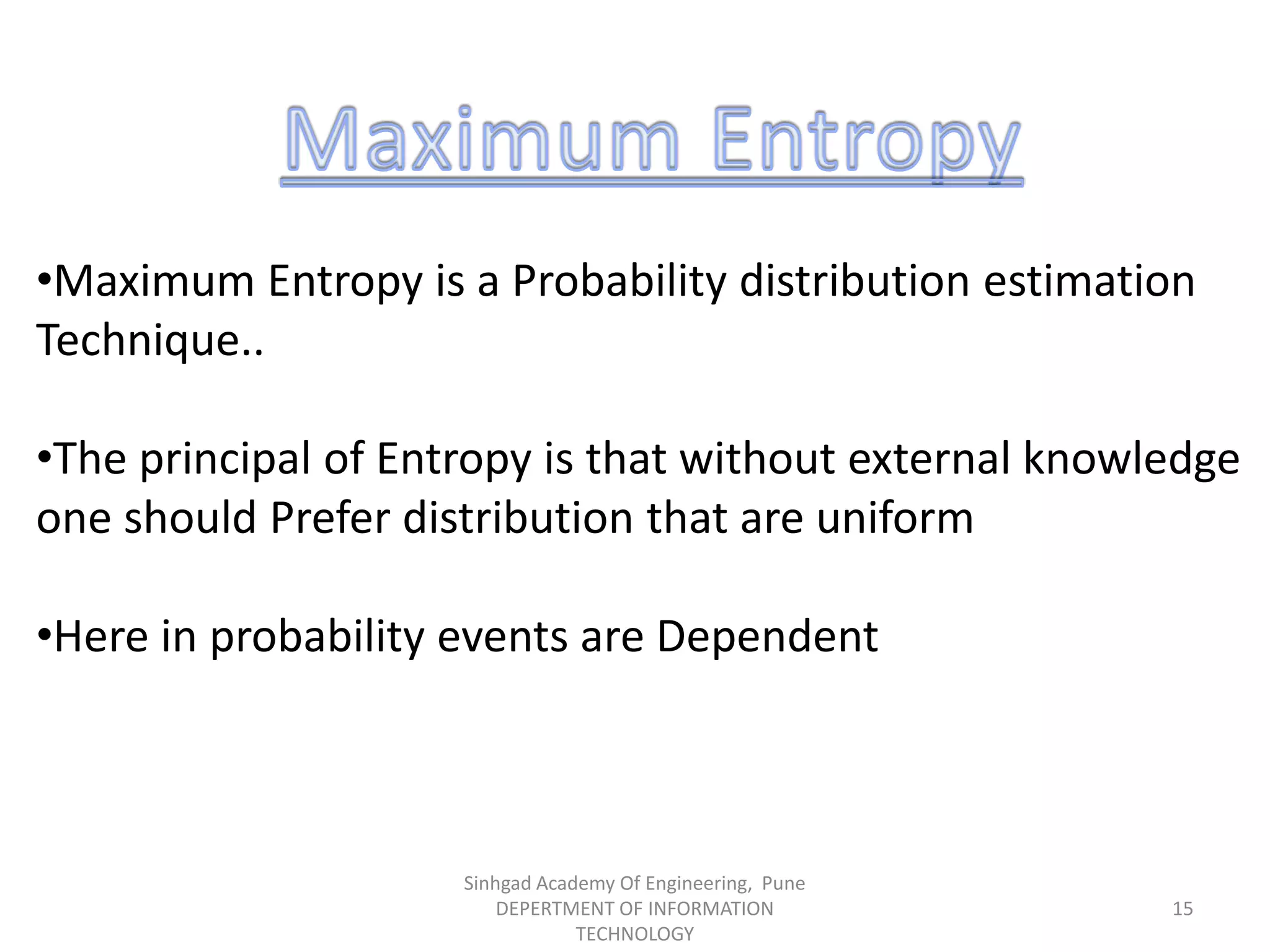
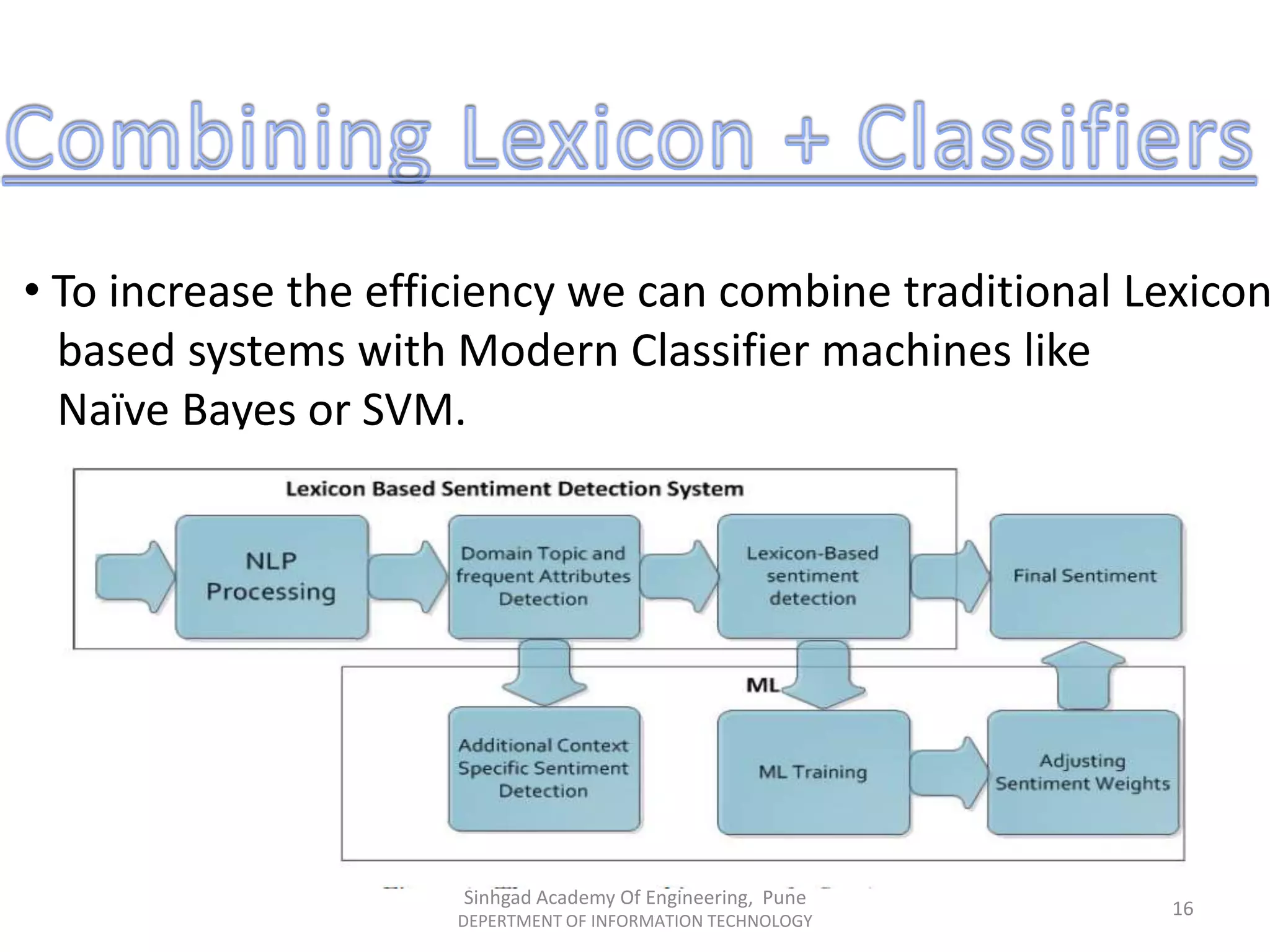
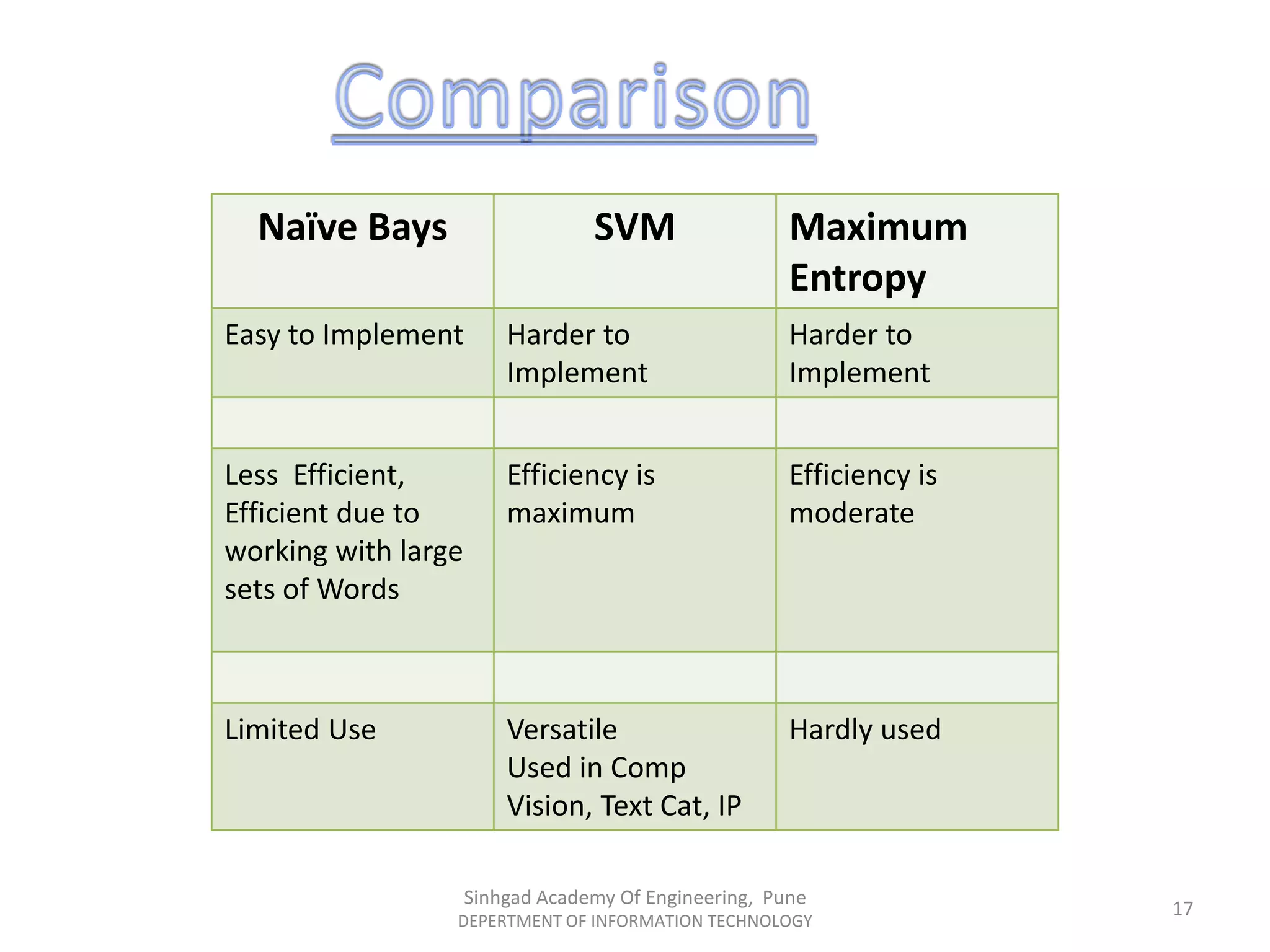
![Observations :
Ref: [1] Sinhgad Academy Of Engineering, Pune
DEPERTMENT OF INFORMATION TECHNOLOGY
18](https://image.slidesharecdn.com/ml-150410091325-conversion-gate01/75/Sentiment-Analysis-Using-Machine-Learning-18-2048.jpg)
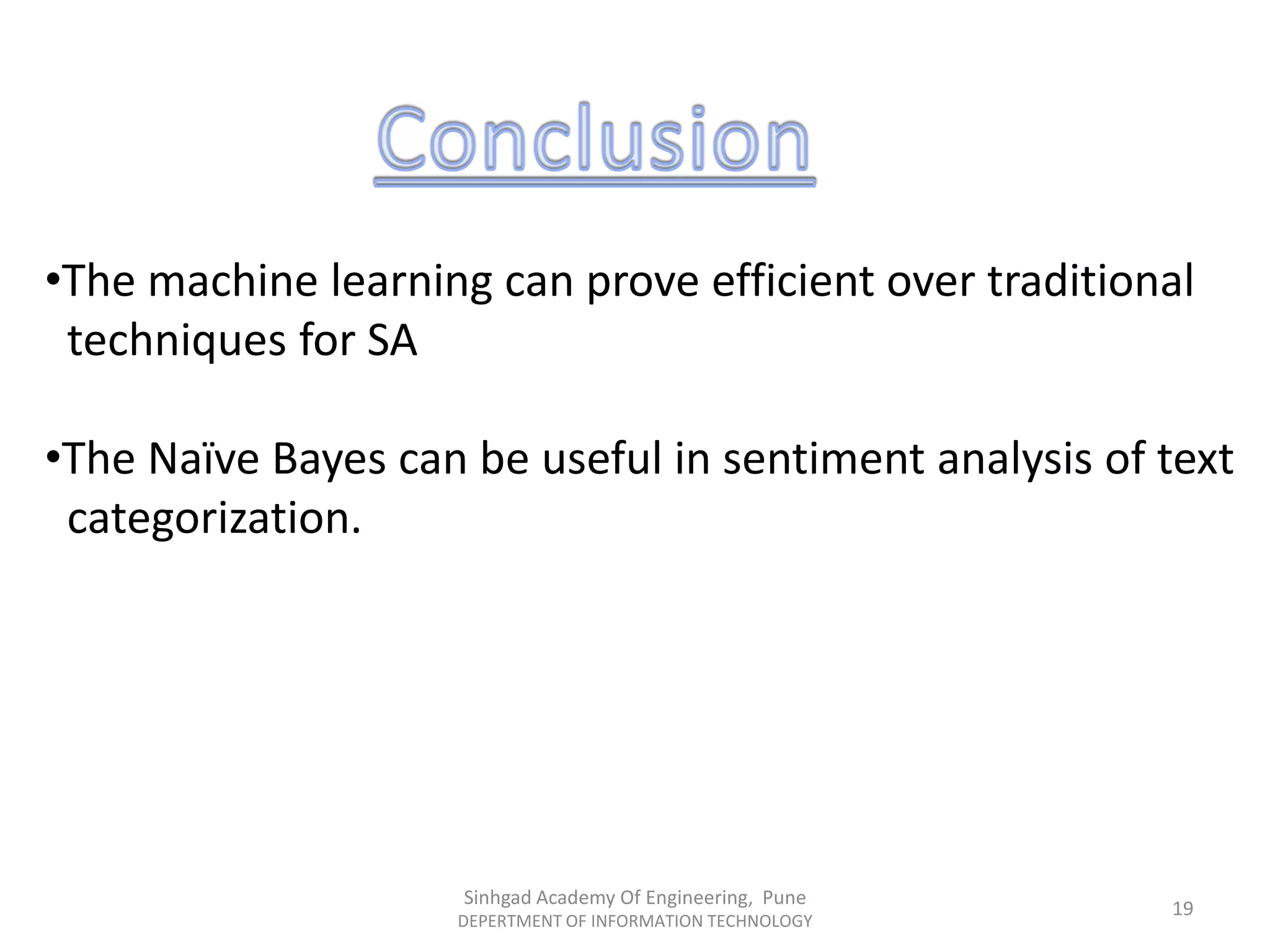
![[1]Thumbsup?Sentiment Classificationusing Machine Learning Techniques.
BoPang and LillianLee,Shivakumar Vaithyanathan[IBM, Cornell University].
[2] Machine Learning Algorithms for Opinion Mining and Sentiment Classification
Jayashri Khairnar,Mayura Kinikar[IJSRP].
[3] An introduction to Machine Learning
Pierre Geurts[Department of EE and CS & Bioinformatics, University of Liège].
[4] A Tutorial on Naive Bayes Classification[Carnegie Mellon University ]
[5]Using Maximum Entropy for Text Classification[Carnegie Mellon University].
[6]combining Lexicon and leaning.[Andrius Mudinas][Dell Zhang]
[7] Wikipedia and Internet.
Sinhgad Academy Of Engineering, Pune
DEPERTMENT OF INFORMATION TECHNOLOGY 20](https://image.slidesharecdn.com/ml-150410091325-conversion-gate01/75/Sentiment-Analysis-Using-Machine-Learning-20-2048.jpg)
